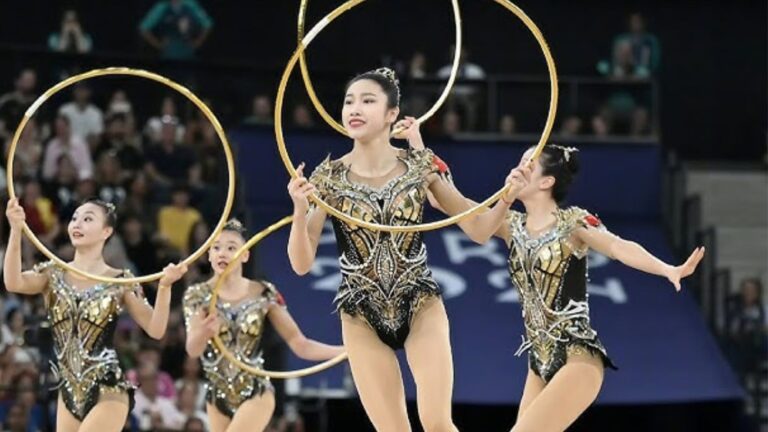
gowagerhub
we pull back the curtain and take you on an exclusive journey behind the scenes of Gowagerhub Theory. From its inception through its evolution, we’ll explore the bold ideas and creative minds that fueled its development. Whether you’re a curious newcomer or a seasoned enthusiast, get ready to dive deep into the layers of complexity that make Gowagerhub not just a theory, but a revolution in thinking! Buckle up as we unravel mysteries, share insights from trailblazers, and unveil how this unique framework is shaping our understanding of [insert relevant field/subject]. Let’s embark on this intellectual adventure together—your front-row seat awaits!
Introduction to Gowagerhub Theory
Have you ever stumbled upon a theory that challenges your perception of reality? Enter the world of Gowagerhub Theory, an intriguing framework that’s capturing minds and sparking conversations across various fields. This theory delves into the intricate connections between ideas and experiences, inviting us to rethink how we interpret our surroundings.
Whether you’re a skeptic or an enthusiast, Gowagerhub offers something for everyone. It encourages exploration beyond conventional boundaries. Prepare to embark on a journey through its history, key principles, practical applications, and even controversies. Join us as we uncover what makes this theory so captivating!
The History of Gowagerhub Theory
Gowagerhub Theory emerged in the early 21st century, capturing the attention of scientists and thinkers alike. It began as a response to growing complexities in social dynamics and technological advancements.
The term “gowagerhub” was coined by Dr. Elara Voss during her groundbreaking research on collective behavior. She observed patterns that traditional theories couldn’t explain, sparking interest across various disciplines.
Initial studies focused on online communities and their influence on real-world interactions. Researchers quickly recognized its relevance across fields like psychology, sociology, and even economics.
As more scholars contributed to this evolving theory, it gained traction in academic circles worldwide. Publications began exploring its implications for understanding human connections in an increasingly digital age.
Through collaborative efforts, Gowagerhub Theory has since evolved into a robust framework for analyzing modern interactions—both virtual and physical—in ways never thought possible before.
Key Concepts and Principles of Gowagerhub Theory
Gowagerhub Theory revolves around interconnectedness. At its core, it emphasizes the relationship between various entities and their environments. This principle highlights that everything is part of a larger system.
Another key concept is adaptability. The theory suggests that systems must be flexible to thrive in changing circumstances. This adaptability allows for growth and evolution over time.
Additionally, Gowagerhub Theory places importance on feedback loops. These are essential mechanisms that help systems learn from past actions, promoting continuous improvement.
Collaboration also plays a significant role within this framework. By working together, individuals or organizations can achieve more than they could alone, enhancing overall effectiveness.
Lastly, the notion of holistic perspectives encourages looking at issues from multiple angles. This comprehensive view fosters deeper understanding and better solutions for complex problems often encountered in life or business scenarios.
The Process of Developing a Gowagerhub Theory
Developing a Gowagerhub Theory begins with identifying a problem or a gap in existing knowledge. Researchers gather information, analyze data, and brainstorm potential solutions.
Collaboration plays a crucial role here. Engaging with experts from various fields can bring fresh perspectives and innovative ideas to the table.
Next comes experimentation and testing. Formulating hypotheses allows theorists to explore different scenarios while collecting relevant evidence. This iterative process helps refine concepts further.
Documentation is essential throughout this journey. Recording findings ensures transparency and aids in future revisions of the theory.
Finally, peer review adds an extra layer of credibility. Feedback from fellow scholars can highlight strengths and weaknesses, guiding researchers toward more robust conclusions that resonate within the academic community and beyond.
Case Studies and Examples of Gowagerhub Theory in Action
Gowagerhub Theory is not just an abstract concept; it manifests in real-world scenarios. One striking case is its application in community development projects. A small town utilized Gowagerhub principles to revitalize local businesses, fostering cooperation among entrepreneurs.
In education, a school district adopted the theory to enhance collaborative learning environments. Teachers shared resources and strategies, leading to improved student performance and engagement.
Another compelling example can be found in environmental initiatives. A non-profit organization embraced Gowagerhub Theory to unite various stakeholders around sustainability goals. This collective effort generated significant impact through innovative waste reduction programs.
These examples illustrate how the theory effectively influences diverse fields by promoting collaboration and creativity among individuals and groups alike. Each case highlights unique adaptations that resonate with specific community needs while staying true to core Gowagerhub concepts.
Criticisms and Controversies Surrounding Gowagerhub Theory
Gowagerhub Theory has sparked its fair share of debates. Critics often argue that its foundational concepts lack empirical support. They point to a reliance on anecdotal evidence rather than rigorous scientific validation.
Some academics dismiss it as overly simplistic, claiming it fails to account for the complexities of human behavior. This reductionist approach can lead to misunderstandings and misapplications in various fields.
Additionally, there are ethical concerns surrounding the implementation of Gowagerhub principles. Skeptics worry that misuse could result in harmful consequences, particularly if individuals misconstrue its applications in personal or professional settings.
Moreover, proponents sometimes struggle to provide clear guidelines for effective application. This ambiguity leaves room for interpretation, which can fuel disagreements about what constitutes valid use of Gowagerhub Theory.
How to Apply Gowagerhub Theory in Your Life
Applying Gowagerhub Theory in your life starts with self-awareness. Take time to reflect on your thoughts and behaviors. Understanding yourself is the first step toward transformation.
Next, identify areas where you feel stuck or unfulfilled. The theory encourages exploring these challenges deeply. Embrace curiosity and question your assumptions.
Implement small, manageable changes based on insights from your reflections. This could mean altering daily routines or shifting perspectives in relationships.
Engage with a community that aligns with Gowagerhub principles. Sharing experiences can foster growth and motivate change.
Finally, track your progress regularly. Celebrate minor victories along the way; they often lead to significant breakthroughs over time.
Future Possibilities and Developments for Gowagerhub Theory
The future of Gowagerhub Theory is ripe with potential. As more researchers delve into its intricacies, new dimensions are likely to emerge. This exploration could lead to innovations that enhance understanding across various fields.
Technological advancements may play a significant role in this evolution. With data analytics and machine learning, practitioners can analyze complex patterns within the framework of Gowagerhub Theory more efficiently than ever before.
Interdisciplinary approaches will also be crucial. By collaborating with experts from diverse backgrounds, the theory can adapt and grow, making it relevant to contemporary issues.
Moreover, public interest in self-improvement and mental frameworks continues to rise. This growing engagement might drive further research funding and practical applications in everyday life.
As communities embrace these ideas, we could witness a broader acceptance of Gowagerhub principles across cultures and societies around the globe.
Conclusion: Why You Should Pay Attention to Gowagerhub Theory
Gowagerhub Theory offers a fascinating lens through which to view our world and experiences. By understanding its key concepts and principles, individuals can unlock new perspectives on their personal journeys. The process of developing this theory encourages critical thinking and innovation.
Case studies demonstrate the practical applications of Gowagerhub in various fields, showcasing how it can drive change and inspire progress. While criticisms exist, they serve as opportunities for dialogue and growth within the community surrounding Gowagerhub.
As we look ahead, the potential developments within this theory could lead to transformative ideas that reshape our understanding of complex systems in life. Whether you’re a skeptic or an advocate, engaging with Gowagerhub Theory is worthwhile. Its insights might just illuminate paths you hadn’t considered before—opening doors to deeper connections with yourself and others along your journey.






